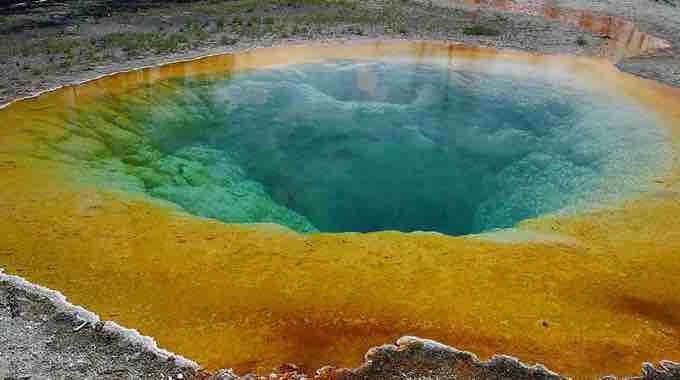Evolution of Prokaryotes
In the recent past, scientists grouped living things into five kingdoms (animals, plants, fungi, protists, and prokaryotes) based on several criteria such as: the absence or presence of a nucleus and other membrane-bound organelles, the absence or presence of cell walls, multicellularity, etc. In the late 20th century, the pioneering work of Carl Woese and others compared sequences of small-subunit ribosomal RNA (SSU rRNA) which resulted in a more fundamental way to group organisms on earth. Based on differences in the structure of cell membranes and in rRNA, Woese and his colleagues proposed that all life on earth evolved along three lineages, called domains. The domain Bacteria comprises all organisms in the kingdom Bacteria, the domain Archaea comprises the rest of the prokaryotes, and the domain Eukarya comprises all eukaryotes, including organisms in the kingdoms Animalia, Plantae, Fungi, and Protista.
The current model of the evolution of the first, living organisms is that these were some form of prokaryotes, which may have evolved out of protobionts. In general, the eukaryotes are thought to have evolved later in the history of life. However, some authors have questioned this conclusion, arguing that the current set of prokaryotic species may have evolved from more complex eukaryotic ancestors through a process of simplification. Others have argued that the three domains of life arose simultaneously, from a set of varied cells that formed a single gene pool.
Two of the three domains, Bacteria and Archaea, are prokaryotic. Based on fossil evidence, prokaryotes were the first inhabitants on Earth, appearing 3.5 to 3.8 billion years ago during the Precambrian Period. These organisms are abundant and ubiquitous; that is, they are present everywhere. In addition to inhabiting moderate environments, they are found in extreme conditions : from boiling springs to permanently frozen environments in Antarctica; from salty environments like the Dead Sea to environments under tremendous pressure, such as the depths of the ocean; and from areas without oxygen, such as a waste management plant, to radioactively-contaminated regions, such as Chernobyl. Prokaryotes reside in the human digestive system and on the skin, are responsible for certain illnesses, and serve an important role in the preparation of many foods.

Prokaryotes in extreme environments
Certain prokaryotes can live in extreme environments such as the Morning Glory pool, a hot spring in Yellowstone National Park. The spring's vivid blue color is from the prokaryotes that thrive in its very hot waters.